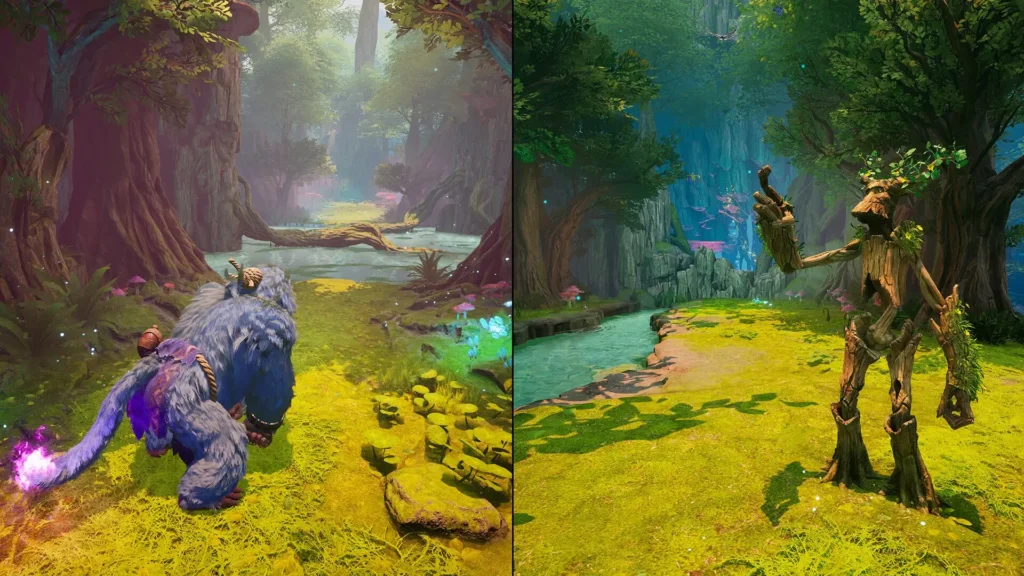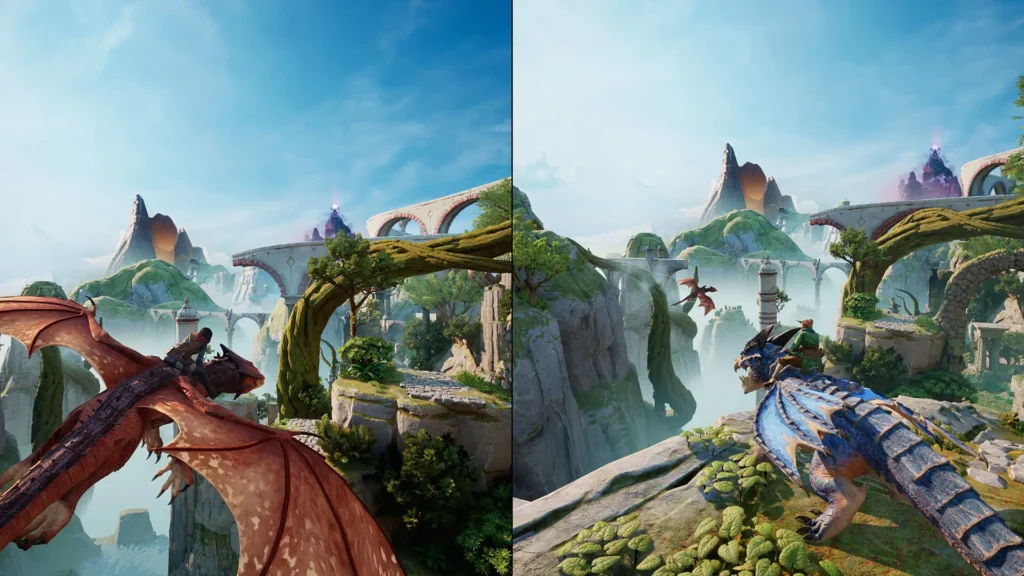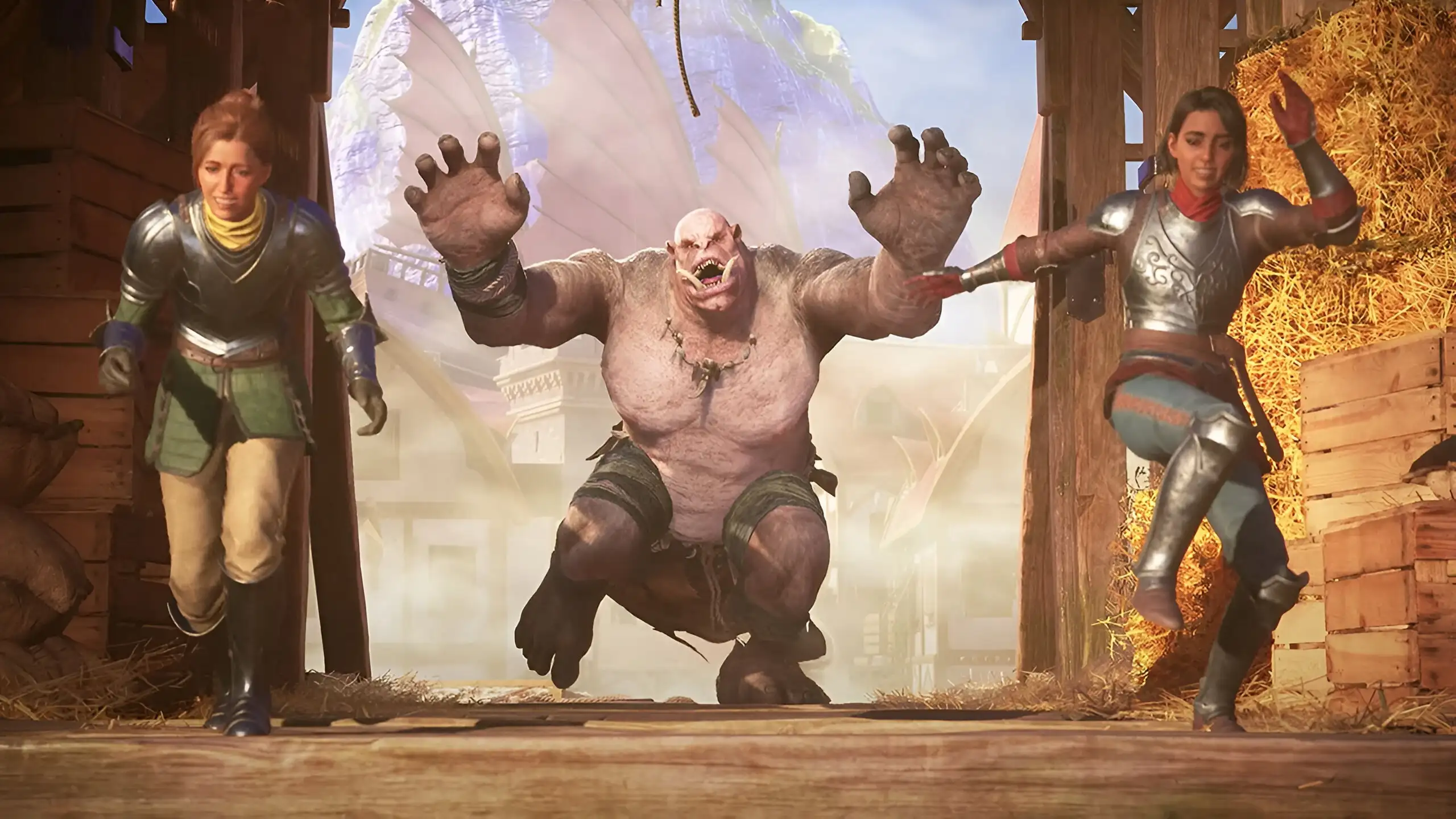Based on the successful reception of the game, It Takes Two, Hazelight Studios is now working on Split Fiction, a two-player game with a lot of different elements. Whether it’s puzzle-solving, platforming, twin-stick shooting, or some intense platform clashes, this co-op title never settles on one genre. With imagination and precision it creates a constantly varying experience which is rich in diversity yet coherent.
At the centre of the story are the two struggling writers, Zoe and Mio, who get caught up in a tech company which promises to publish their work. Instead, their ideas are extracted and exploited after being trapped in the digital space. Zoe’s digital world glitches Mio into her world forcing the two to work together to fight back against the corporation and destroy its evil operation. The characters’ differences make the story funny and serious. The story gets serious quickly.
By sharply critiquing corporate tech culture, the game comments on modern-day creative potential that has become no different from a resource to be consumed and monetized. Hazelight has been upfront about the game being a satire of a world where algorithms determine what is art.
A Movement System That Prioritises Flow
Just like its predecessor, Split Fiction is off to the races. The characters can jump, double jump, dash in air, run in the wall, grapple. Thus, a parkour system feels easy and fun. The platforming leans more in favor of momentum than punishing precision, with mechanics that assist players with alignment on rails and platforms.
As a result, you can plow through it without worrying about check-pointing barriers and other annoyances. That said, the movement isn’t flawless. “It can feel cumbersome to rejoin play when a player is behind.” There’s also a small visual issue when Zoe and Mio share a platform. When they phase through one another, the immersion experience slightly breaks. A slight shimmer effect could have helped the game maintain its style while avoiding any pacing problems.
Even though everything seems nice, the movement system is most enjoyable in co-op. When partners of different strengths play it, it’s great fun. With checkpoints often, backtracking is kept at a minimum and players come back after dying pretty quickly even in the boss fights. Sometimes, the timing of respawning during a boss fight will be awkward, leading to cheap hits. However, this is rare and doesn’t happen for long.

Built Around Communication and Joy
Split Fiction doesn’t focus on intense difficulty. This game is best played with all players cooperating with one another to solve puzzles when the action changes quickly. In many cases, the challenge includes timing and communication. For instance, a jump must be timed precisely. Alternatively, a series of actions may hinge on whether to act on “three” or just after it. These moments capture the madness and silliness of a high-stakes partnership like those in movies.
To help keep the game from becoming too confusing, it offers one other tool for anyone who is having trouble — if they are having too much trouble, they can skip to the next checkpoint after dying several times over. The clever design means that enjoyment is the focus of the game, taking away any barriers less-skilled players might face.

Constantly Changing Worlds and Mechanics
Split Fiction is differentiated by constant innovation. The game introduces new gameplay mechanics, themes, and artistic styles that are never overstayed. Zoe and Mio’s backgrounds as writers inform this diversity: while Zoe’s levels are firmly in the realms of fantasy, Mio’s venture into science fiction.
Mio in this hilarious manga combines the classic sci-fi hero tropes with a splash of real-world comic craziness. The fantasy worlds of Zoe start off in a light-hearted manner. But they become deeper and more serious as the story goes on. In the later acts, these settings grow more sophisticated, featuring intricate boss fights and darker story developments.
Every big boss fight here has a distinctively designed enemy. The ultimate climax of the movie consists of a gigantic, movie-like scene which is a highlight of the film.
Final Thoughts
Split Fiction wonderfully demonstrates the capabilities of cooperative gameplay. The journey through this game lasts 14 hours and is refreshing thanks to its innovative design and refusal to stick to any one genre.
Every level offers a new mechanic and aesthetic which keeps the game lively throughout the experience. Hazelight Studios has successfully demonstrated how to make games with meaning, a high level of polish, and most importantly: fun! Split Fiction seems to signal a bold new step forward for fiction rather than a mere extension of its predecessors.

